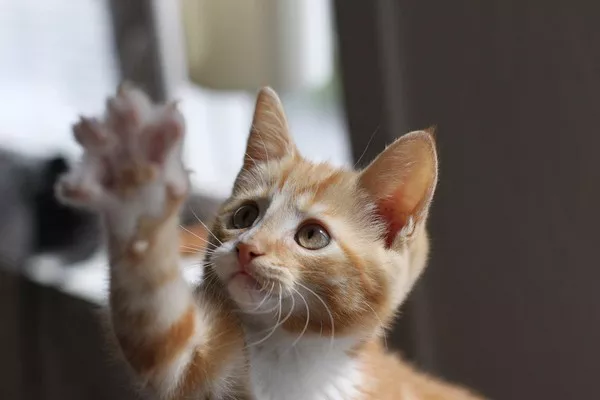Turtles, known for their calm demeanor and unique biology, are fascinating creatures to keep as pets. Whether you’re a novice turtle owner or a seasoned herpetologist, understanding the intricacies of their care is crucial. One commonly overlooked aspect of turtle care is their water consumption. Do pet turtles drink water? This article delves into the various facets of turtle hydration, exploring their natural behaviors, dietary needs, and how to ensure your pet turtle remains healthy and hydrated.
Natural Habitats and Water Consumption of Wild Turtles
How Do Wild Turtles Interact with Water?
Wild turtles are found in a variety of habitats, ranging from arid deserts to lush wetlands. Their interaction with water varies significantly depending on their species and environment. Aquatic turtles, such as red-eared sliders and painted turtles, spend a majority of their lives in water. They rely on water not just for hydration but also for buoyancy, feeding, and even thermoregulation. Terrestrial turtles, like box turtles and tortoises, encounter water less frequently but still require it for hydration and digestion.
Aquatic turtles drink water as they swim, often absorbing it through their skin and cloaca. Terrestrial turtles, on the other hand, may rely more on the moisture content in their diet and drink water from puddles or dew. This natural behavior emphasizes the importance of providing an appropriate habitat that mimics their natural environment as closely as possible.
Do Turtles Absorb Water Through Their Skin?
Turtles have a unique physiological ability to absorb water through their skin and cloaca, a multipurpose opening used for excretion and reproduction. This is particularly true for aquatic species. The process, known as osmosis, allows them to maintain their hydration levels even while submerged. However, this does not negate the necessity for drinking water. Providing clean, accessible water sources ensures that turtles can hydrate effectively through both drinking and absorption.
Dietary Needs and Hydration of Pet Turtles
What Role Does Diet Play in Hydration?
A turtle’s diet significantly influences its hydration levels. In the wild, turtles consume a variety of foods, many of which have high water content. For example, aquatic turtles often eat plants, small fish, and invertebrates, all of which contribute to their overall water intake. Terrestrial turtles may feed on fruits, vegetables, and insects, also providing necessary moisture.
Pet turtles should be fed a balanced diet that mirrors their natural eating habits. For aquatic turtles, this includes commercial turtle pellets, leafy greens, and occasional live prey. Terrestrial turtles benefit from a diet rich in fruits, vegetables, and protein sources such as worms or insects. Ensuring their food has adequate moisture content is essential in preventing dehydration.
How Often Should Pet Turtles Be Fed?
Feeding frequency depends on the age, species, and health of the turtle. Juvenile turtles typically require daily feeding due to their rapid growth and high metabolism. Adult turtles can be fed every other day or even less frequently. However, each feeding should be monitored to ensure the turtle is consuming enough to meet its hydration and nutritional needs. Overfeeding can lead to obesity and health issues, while underfeeding can result in malnutrition and dehydration.
Pet Turtles Health Conditions Related to Hydration
What Are the Signs of Dehydration in Turtles?
Dehydration in turtles can lead to severe health problems. Recognizing the signs early is crucial for effective treatment. Common symptoms of dehydration include:
- Sunken eyes
- Dry, flaky skin
- Lethargy and reduced activity
- Loss of appetite
- Thick, sticky saliva
If you observe these signs, it is important to address the issue promptly by increasing the turtle’s access to fresh water and potentially adjusting its diet to include more water-rich foods.
How Can You Prevent and Treat Pet Turtles Dehydration?
Preventing dehydration involves maintaining a suitable habitat with clean water and a balanced diet. For aquatic turtles, this means regularly changing the water in their tank and ensuring it is free from contaminants. For terrestrial turtles, providing a shallow dish of fresh water for drinking and soaking is essential. Additionally, misting their enclosure can help maintain appropriate humidity levels.
If a turtle is already dehydrated, immediate steps should be taken to rehydrate it. Soaking the turtle in a shallow container of lukewarm water for 15-30 minutes can encourage water absorption through the skin. In severe cases, a veterinarian may need to administer fluids subcutaneously or orally.
Creating an Optimal Environment for Pet Turtles Hydration
What Type of Water Should Be Provided?
The quality of water you provide to your pet turtle is paramount. Tap water often contains chlorine and other chemicals that can be harmful to turtles. It is recommended to use a water conditioner to neutralize these chemicals or provide bottled spring water. The water should be changed regularly to prevent the buildup of bacteria and other pathogens.
How Can You Set Up a Hydration-Friendly Habitat?
For aquatic turtles, a well-maintained tank with a filtration system is essential. The tank should have areas of both deep and shallow water to allow for swimming and resting. For terrestrial turtles, the enclosure should include a shallow water dish that is easy to access and large enough for the turtle to soak in. Regularly misting the enclosure can also help maintain humidity levels, particularly for species that require higher humidity.
Ensuring your turtle has access to clean, fresh water at all times is crucial. Regularly monitor the water quality and adjust as necessary to provide the best environment for your pet.
What Are the Common Mistakes to Avoid?
Some common mistakes in providing water to pet turtles include:
- Using untreated tap water
- Failing to change the water frequently enough
- Not providing a large enough water dish for soaking
- Neglecting to mist the enclosure for species requiring higher humidity
By avoiding these pitfalls, you can help ensure your turtle remains healthy and well-hydrated.
See Also: How Long Do Eastern Long Neck Turtles Live?
FAQs:
Do All Turtles Need to Soak in Water?
While not all turtles require frequent soaking, most benefit from it. Aquatic turtles naturally spend a significant amount of time in water, which aids in their hydration, digestion, and shedding processes. Terrestrial turtles may not need to soak as often, but providing a shallow dish of water allows them to drink and maintain proper hydration levels.
Can Turtles Drown?
Yes, turtles can drown if they are unable to surface for air. This is particularly a risk for juvenile or weakened turtles that may not have the strength to swim to the surface. It is important to ensure that the water depth in an aquatic turtle’s tank is appropriate for its size and that there are plenty of areas for the turtle to rest and breathe.
How Do You Encourage a Turtle to Drink Water?
If you notice that your turtle is not drinking water, there are a few strategies you can employ to encourage hydration:
- Offer water-rich foods such as leafy greens and fruits
- Soak the turtle in a shallow container of water to stimulate drinking behavior
- Ensure the water is clean and free from contaminants
Observing your turtle’s habits and adjusting its care routine can help ensure it remains hydrated.
Are There Any Special Considerations for Baby Turtles?
Baby turtles have higher hydration needs due to their rapid growth and high metabolism. They require more frequent access to clean water and a diet rich in moisture. Ensuring that their enclosure has a shallow water area that is easily accessible can help meet their hydration needs. Additionally, monitoring their health closely and adjusting their care routine as needed is vital for their development.
Conclusion
In conclusion, understanding and addressing the hydration needs of pet turtles is crucial for their health and well-being. Whether your turtle is aquatic or terrestrial, providing clean, accessible water, a balanced diet, and an optimal habitat is essential. Recognizing the signs of dehydration and taking proactive steps to prevent it can help ensure your turtle leads a healthy and happy life.
Turtles are unique and rewarding pets, and by paying close attention to their hydration needs, you can provide the best possible care for your shelled companion. Remember, a well-hydrated turtle is a happy turtle, and taking the time to understand and meet their needs will enhance your experience as a turtle owner.
Related Topics:


























